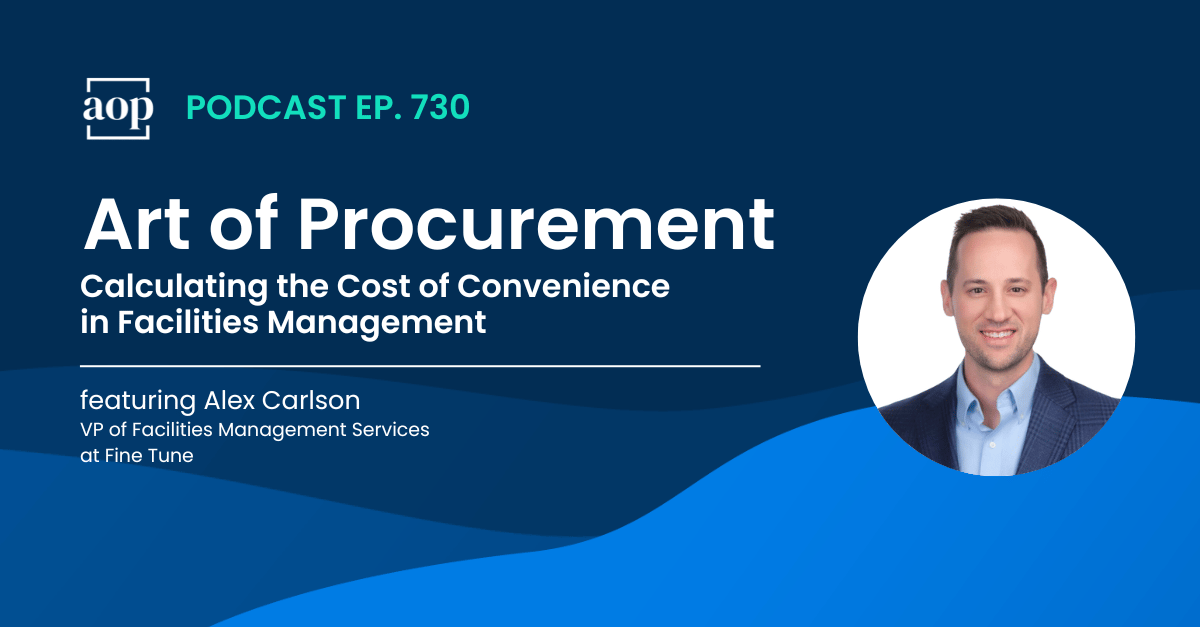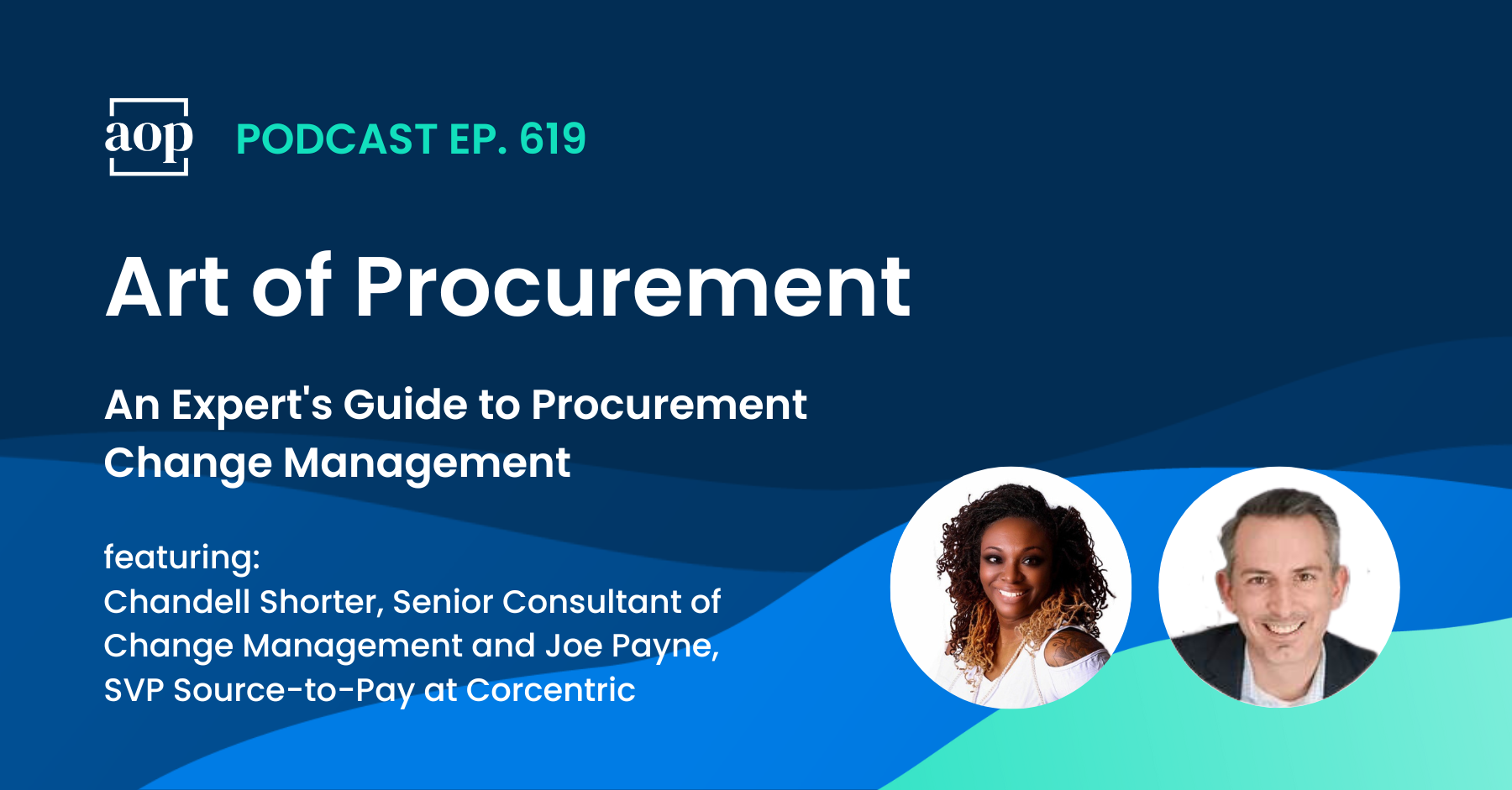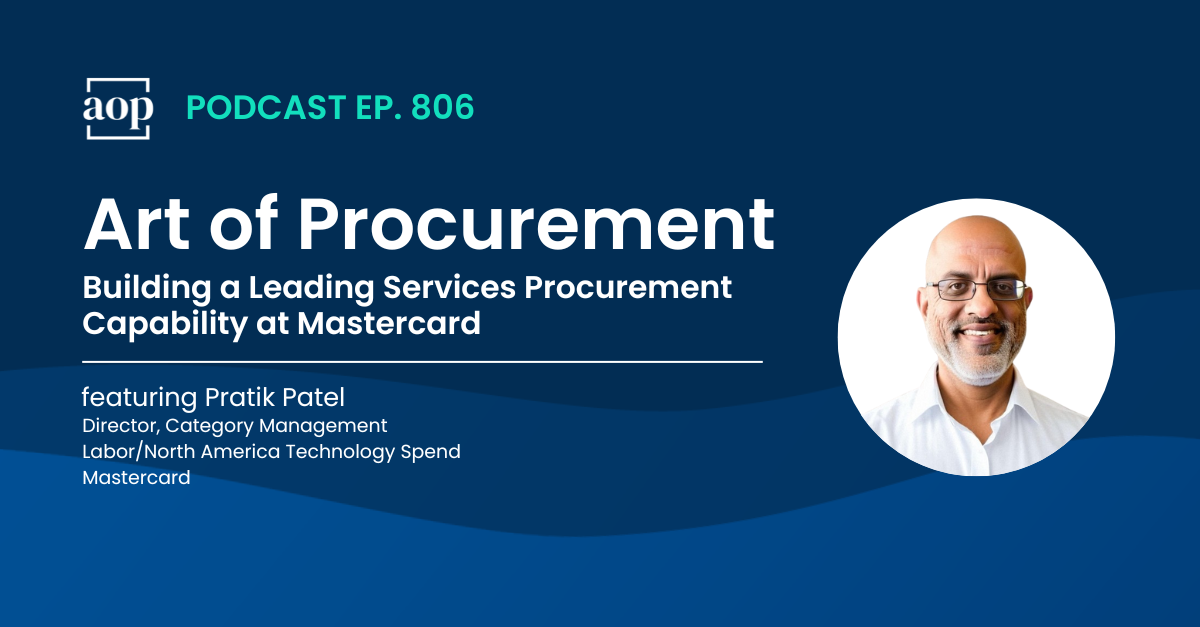3 min read
Calculating the Cost of Convenience in Facilities Management
Philip Ideson : September 8, 2024

“Everyone has an opinion about facility services in your buildings, so you’re always trying to accommodate multiple stakeholders and juggle multiple departments.” – Alex Carlson, VP of Facilities Management Services at Fine Tune
As anyone with experience in facilities management knows, it’s one of the more complex categories to manage. Over the last few years, big shifts in where and how people work have only added to that complexity.
Most recently, we’ve seen some organizations pull away from the work-from-home approach that swept across so many industries during the pandemic – essential workers not included, of course – and there’s a renewed push, and in some cases mandates, for a return to the office (RTO).
We recently spoke with Alex Carlson, former Vice President of Category Management within Wells Fargo’s Corporate Properties division and new VP of Facilities Management Services at Fine Tune, about the complex nature of facilities management. As he explains, the RTO trend is definitely putting new pressures and expectations on facilities management.
According to Alex, around 90 percent of all Fortune 100 firms now require employees to be in the office at least three or five days a week. What’s more, he added, many organizations are shying away from RTO mandates but instead working hard to incentivize employees to come in. These organizations have figured out that they don’t want unhappy employees coming in begrudgingly just because of a mandate; instead, they want to create an in-office environment that motivates and excites workers to be present. Clearly, facilities services play a big role in making that happen.
Alex shared a few ways that facilities management should adjust their approach or priorities to meet new workforce trends like RTO:
A New Emphasis on Amenities and Services for Employees
To better attract and retain employees while also requiring (or, at minimum, ‘strongly encouraging’) them to be in-office most or all of the week, many companies are investing in enhanced in-office employee amenities and services. As Alex explains, “there is a heavy emphasis now on the amenities in office buildings, like collaborative spaces, flex office spaces, pantry services, coffee services, or fitness.” Some businesses, he added, have even gone so far as to offer personal concierge services to help employees with personal errands and tasks while they’re at the office.
As some organizations shift from a “push” model of mandating RTO towards a “pull” approach where they create an environment that motivates in-person attendance, this has raised the bar for facilities management and added pressure to meet the changing expectations of employees and of the business.
New Cost Considerations for Facilities Management
All of these amenities and services come at a cost, which procurement leaders must account for in their budgets. For example, if a company decides to promote employee wellness by adding a walking trail on their campus might seem fairly straightforward, but it adds additional layers of complexity for facilities management.
“More outdoor spaces – especially sidewalk areas – not only add to a concrete maintenance plan and inspection audit for facility services, but FM even has to think about things like snow removal,” said Alex. “For those that have managed that expense, you know that sidewalk clearing is the most expensive part of snow removal, and this isn’t often figured into the initial pricing.”
Facilities management has to be proactive in projecting where these additional costs will crop up, often unexpectedly, in relation to the organization’s wider RTO plan.
New Opportunities for Growth
Fluctuations in workforce trends, like work-from-home to RTO or hybrid, have also meant a change in needs for commercial real estate customers. “They’ve really had to adapt over the last number of years,” said Alex. This adaptation has created opportunities for suppliers to identify new requirements and unlock additional revenue streams, which falls on facilities management to ensure is mutually beneficial for both sides, the business and the supplier.
“One of the primary areas where suppliers can come in and unlock that margin growth is in a change in customer’s needs. We have all felt the change order before in facilities, and that is a margin grower right there.”
Looking Ahead
Changing workforce trends like we’re now seeing with new RTO policies puts added complexity and expectations on facilities management. Understanding how the needs of their stakeholders are evolving, from employees to business leaders and decision-makers, and aligning that with cost considerations is high priority for facilities management right now. And, while Alex says he “thinks we’re on the back end of a lot of these challenges, companies still need to assess how all of these challenges have impacted their bottom line and identify where they need to optimize” going forward.
Subscribe to Art of Procurement
Apple | Stitcher | iHeart Radio | Email




